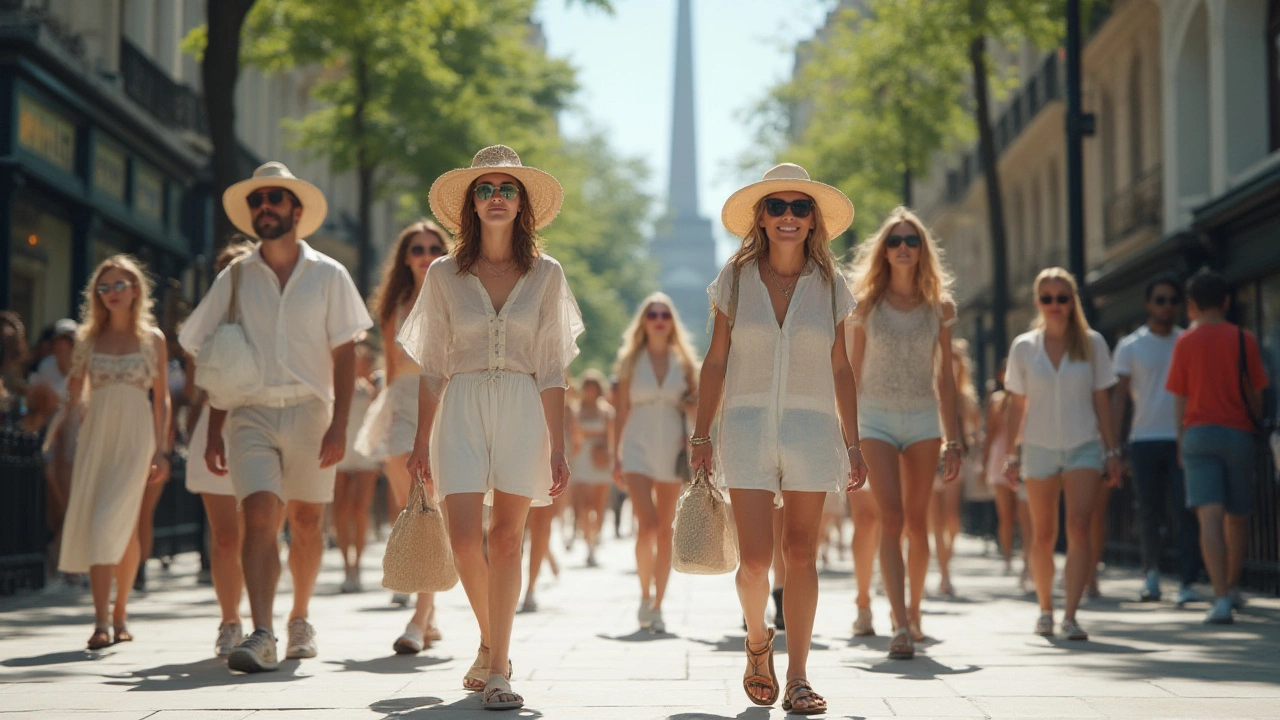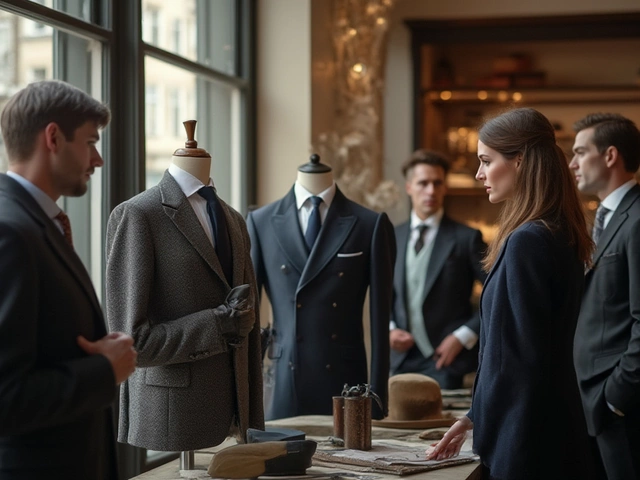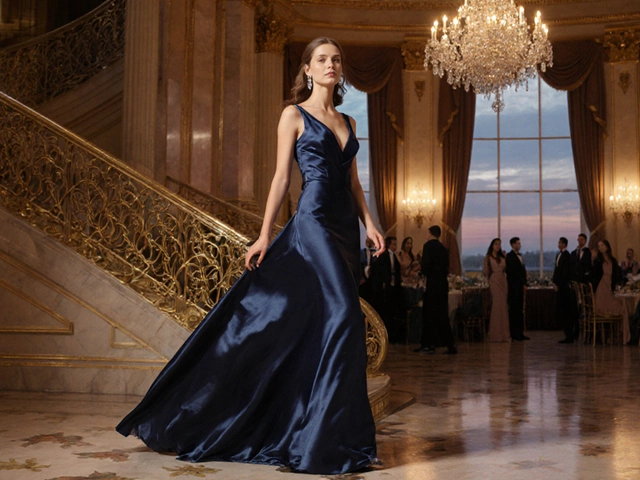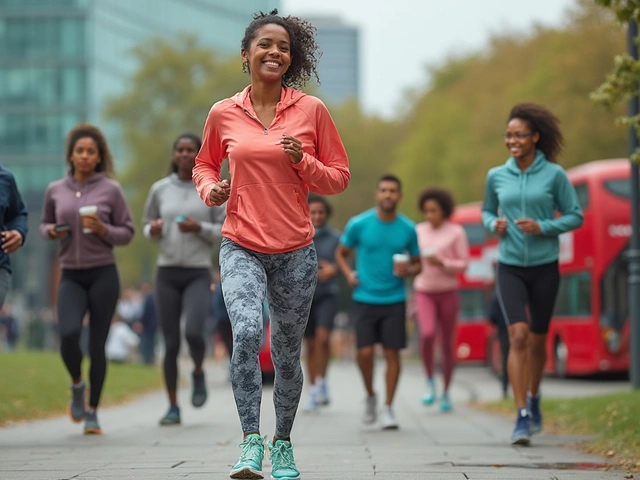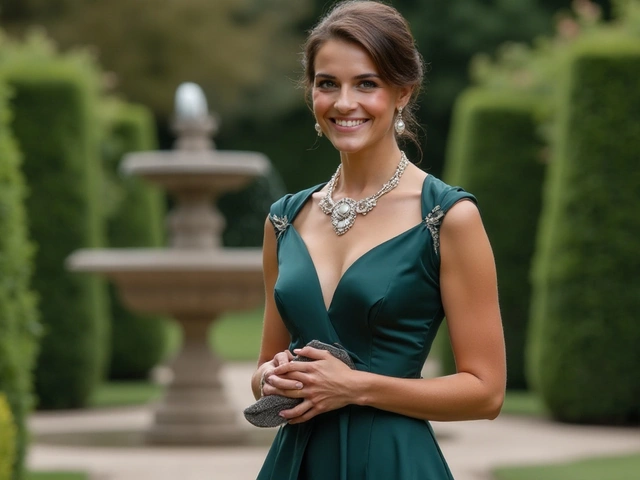Imagine stepping outside into what feels like an open-air oven. Sweat beads up on your forehead before you even hit the sidewalk. Anyone who’s experienced a full-throttle 90-degree day knows that choosing the wrong outfit isn’t just uncomfortable—it can ruin your plans fast. But here's a wild detail: your body tries to cool down by sweating out up to two liters of water per hour during physical activity in the heat. The right outfit does more than just keep you presentable. It’s essential to surviving the summer, and it’s all about understanding fabric science, smart styling, and why some things only work in either dry or humid heat. Let's break it down and make sure your next summer adventure feels cool—in every sense.
Understanding Fabric: What Works and What Sweats
Not all fabrics are created equal, especially when the thermostat crests ninety. Cotton sounds like an obvious go-to for a lot of people. It's soft, light, and pretty affordable. But did you know heavy cotton can hold onto sweat, leaving you feeling gross all day? Lightweight, looser weave cottons are far better than thick ones. Linen, on the other hand, is like nature’s built-in AC. It absorbs sweat but dries fast, letting that warm breeze pass right through. That's why so many Mediterranean countries swear by linen summer-after-summer.
Synthetic fabrics like polyester are tricky. Cheap poly is a magnet for sweat and stink—it basically traps heat against your skin. But there’s a twist. Performance brands have improved polyester with wicking technology. These blends pull sweat away from your skin and help it evaporate. So, if you’re exercising outside or sweating it out at a street fair, check the label for "wicking" or "dry-fit."
Here’s a breakdown of popular summer fabrics and their key stats:
| Fabric | Breathability | Sweat Wicking | Wrinkle Resistance | Feel |
|---|---|---|---|---|
| Linen | High | Good | Poor | Light & Crisp |
| Lightweight Cotton | Good | Decent | Medium | Soft & Breezy |
| Polyester (Wicking) | Medium | Excellent | High | Slick |
| Bamboo | Very High | Good | Medium | Super Soft |
| Rayon (Viscose) | High | Decent | Medium | Silky |
For tops and t-shirts, avoid dark colors. Black, navy, and deep shades soak up the sun big time. Stick with white, pale blue, and lighter pastels. They reflect sunlight—that’s why desert clothes tend to be light-colored. Hot weather outfits start with this simple swap; it’s the difference between radiating heat and throwing it back at the sun.
If you want to get really technical, some high-tech fabrics include “mesh zones” or vents under the arms or on the upper back, making them perfect if you’re running errands or actually running in the park. And absolutely, the closer the fit, the less airflow. Baggy is your hero.
Picking the Right Outfit: Style and Function Over Suffering
Scorching heat messes with your style choices, and sometimes, sacrificing looks for comfort feels inevitable. But you don’t have to walk around looking like you just rolled out of bed. The trick is in combining smaller, airier pieces with a little planning.
For tops, look for short sleeves or breathable tank tops made of natural fibers. Button-downs (especially in linen or airy cotton) can actually keep you cooler than a skin-tight tee, since they don’t cling to your body and allow more airflow. Some brands offer "camp collars"—those slightly open, laid-back necklines you usually see at beach bars. Bonus: camp-collared shirts fit right into the current summer fashion trend for both men and women.
Bottoms should avoid the heavy fabrics, too. Denim jeans? Save those for fall. Go for shorts if your environment allows it. For office settings or just to switch up your look—try lightweight chinos. Modern brands now make them with stretchy, ventilated weaves, so you won’t dread putting them on in the morning. Linen-blend trousers and drawstring pants are especially good for keeping you looking sharp while feeling breezy.
If you’re heading to a place where showing skin is a cultural no-no, don’t worry. You can still stay relatively cool in loose, full-coverage outfits made from breathable materials. Wide-legged palazzo pants, maxi skirts, or long, oversized shirts help keep sunlight off and let air circulate. There’s a reason desert wanderers wrap up head to toe: it’s actually cooler if the fabric isn’t pressed right against you.
Don’t forget shoes. High temps make feet expand slightly, so ditch anything that’s too snug. Open-toed sandals or canvas sneakers are the best bet. “Barefoot” shoes, with breathable uppers and no padding, are making waves for comfort—at least if you’re not trekking through puddles.
If you want to add flair without layering a bunch of accessories, think sunglasses with wide lenses, lightweight hats (like fedoras or bucket hats), and belts made of braided rope or woven fabric. Keep jewelry minimal—metal heats up under the sun and can feel like a branding iron.

Smart Accessories and Hacks to Beat Extreme Heat
When it’s close to a hundred degrees out, accessories are more about surviving than making a fashion statement. But you don’t have to look like an over-prepared tourist, either.
- Hats: Wide-brim sun hats or simple baseball caps help shield your face and scalp from sunburn. Straw hats offer both airflow and style, while performance hats with UPF ratings block even more rays.
- Sunglasses: Pick ones with UV protection. Polarized lenses help reduce glare, especially if you’re near water or sand, making it easier to see (and squint less, which means fewer wrinkles years down the road).
- Neck Scarves: Dip a cotton bandana in cold water, wring it out, and tie loosely around your neck. It’s a trick borrowed from athletes and old-time cowboys—a little coolness goes a long way in keeping your core temperature low.
- Cooling Towels: These are made from fancy microfiber that, when wet, chills to a gentle cool touch. Perfect in your gym bag or tucked into your backpack for a day trip.
- UV-Protective Clothing: Some brands make shirts, shorts, and even sleeves with built-in UPF (Ultraviolet Protection Factor) 40+ ratings. They’re pricier, but if you burn easily or plan to be outside for hours, it can really save your skin—literally.
On especially nasty days, personal fans (those USB-chargeable handheld fans or ones that hang on your neck like headphones) will save your sanity and keep you from turning into a puddle. If you’re headed to a theme park or festival, pack some hydrating mist and sunscreen with at least SPF 30—sunburn plus sweat is a recipe for misery.
For anyone with long hair, get creative: loose braids or a high bun get it off your neck, or try a simple clip. Heat and humidity turn loose hair into a sweaty mess fast. Women and men with beards or longer facial hair might want to trim back for the summer, or at least keep hair clean and well-conditioned so it doesn't trap sweat.
How about socks? If you have to wear them, make sure they’re moisture-wicking—some athletic brands use merino wool, which is surprisingly not too hot since it manages sweat. Thin, no-show socks are way better than beefy cushioned ones right now.
Bit of trivia: A 2023 survey by a major US retailer found a 70% jump in sales of wide-brim hats and oversized sunglasses in July compared to cooler months, showing how much people pivot their style just to save some skin (and sanity) in the summer.
Little-Known Tips for Staying Cool: It’s More Than Just the Clothes
Even if you nail the best 90 degree weather clothes, there are other simple tricks that make hot days a little less brutal. Skip heavy lotions or makeup—thick creams only keep your skin from breathing. Lightweight, mineral-based sunscreen works as a shield without creating a sticky layer. For the face, look for gel-based moisturizer or spritz with rose water mid-day for a quick freshen-up.
Start your day with a cool shower and give yourself a few extra minutes to let your body dry naturally before you get dressed. It’ll help you avoid that sticky “just stepped out of the jungle” feeling before you even leave the bathroom.
Carry a refillable water bottle and sip constantly. By the time you’re thirsty, you’re already behind on hydration. Remember, sweat isn’t just water—it’s salt and minerals, too. On especially hot days, swap out one glass of plain water for something with electrolytes.
Instead of a single giant meal, eat smaller, lighter snacks throughout the day. Big, greasy lunches just bog your body down—cold fruits, salads, and yogurts give you energy without heating you up.
Pay attention to timing. On the hottest days, hit your errands or outdoor activities in the early morning or late evening. The sun’s heat is most vicious between 11 a.m. and 3 p.m. There’s a reason Mediterranean cities shut down for a siesta; locals avoid the heat at peak hours.
Finally—never underestimate the power of shade. An awning, tree, or patio umbrella can lower ambient temperatures by around 10-15 degrees Fahrenheit, according to a recent American Meteorological Society review. So if you’re at the park or beach, pick your spot wisely; a good patch of shadow is as important as any piece of clothing.
Learning to dress smart for 90 degree weather isn’t just about looking good or following trends. It’s about letting your body do what it’s good at and giving yourself the best shot at staying cool, confident, and comfortable—even when summer turns serious.
